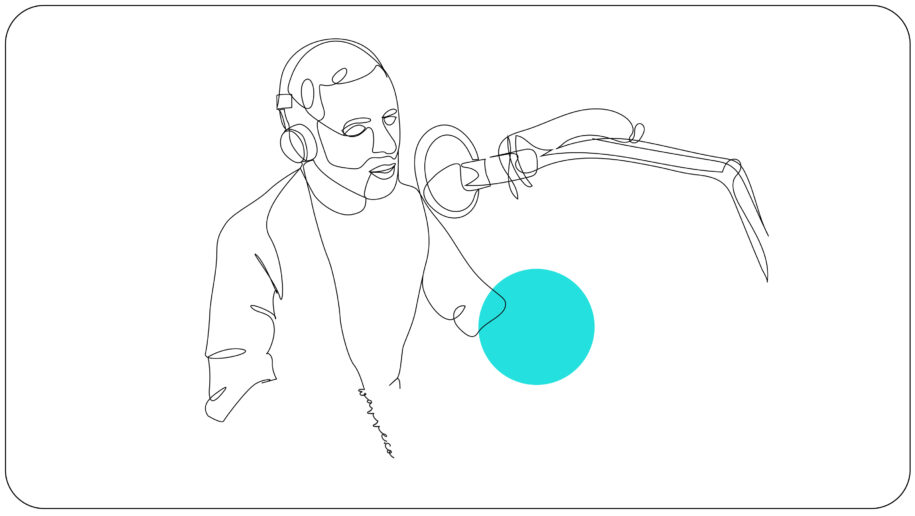New listeners tuning into your podcast will definitely catch your intro. But then from there they might not give it their complete attention. Just like you might not fully commit when you’re watching TV and flicking through, waiting for something to jump out and grab you.
Scanning podcast intros happens more in this era where single-tasking is becoming increasingly rare as we all try to achieve more. So, your job is to make sure your podcast grabs your listeners and brings them in as engaged members of your audience.
It’s far too easy to miss out on new members because their interest slips away and they press shuffle. Ergo, it’s vital that their first encounter is gripping and captivating, so any listener that finds you can help grow your audience.
And, with more people listening to podcasts than have Netflix accounts, there’s never been a better time to get started.
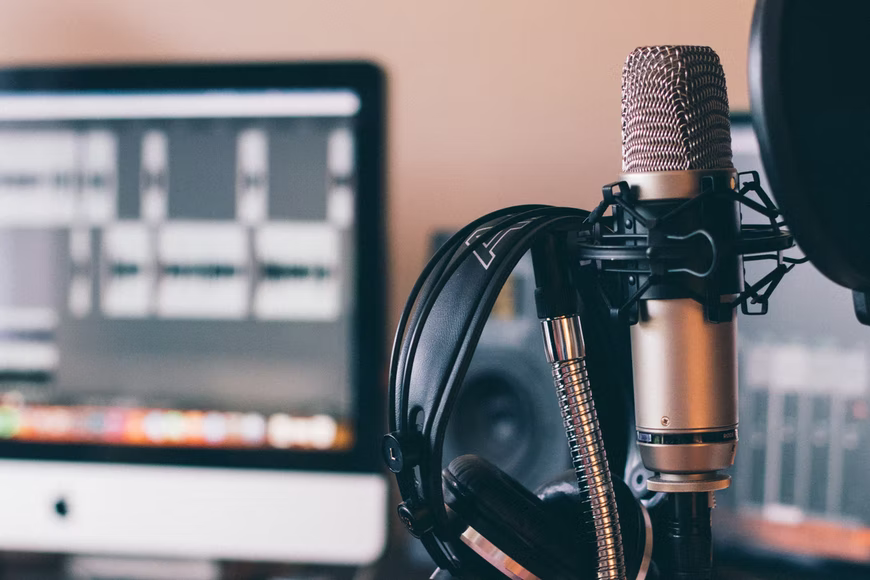
If your intro does grab them, and your listener goes on to enjoy your podcast, they’ll hopefully make it all the way to the outro. This segment has the most potential to turn one-time listeners into engaged audience members. It’s also the perfect opportunity to ask new listeners to hit subscribe, go to your website, or act in whatever way makes sense for your brand.
It doesn’t matter if you’re a new podcaster or you’ve been going a while; you’ll still be that bit closer to increasing your listener count once you’ve mastered these crucial segments. So, whether your podcast talks about growing your newsletter or discusses modern jazz trends, these tips are just the ticket to help grow your tribe.
How to create a podcast intro to engage listeners in an instant
As you can see from the chart below, only 52% of listeners will typically listen to an entire podcast episode. That’s why you must make sure your audience is enjoying it from the get-go and getting value from the listening experience. Here’s how to do it.
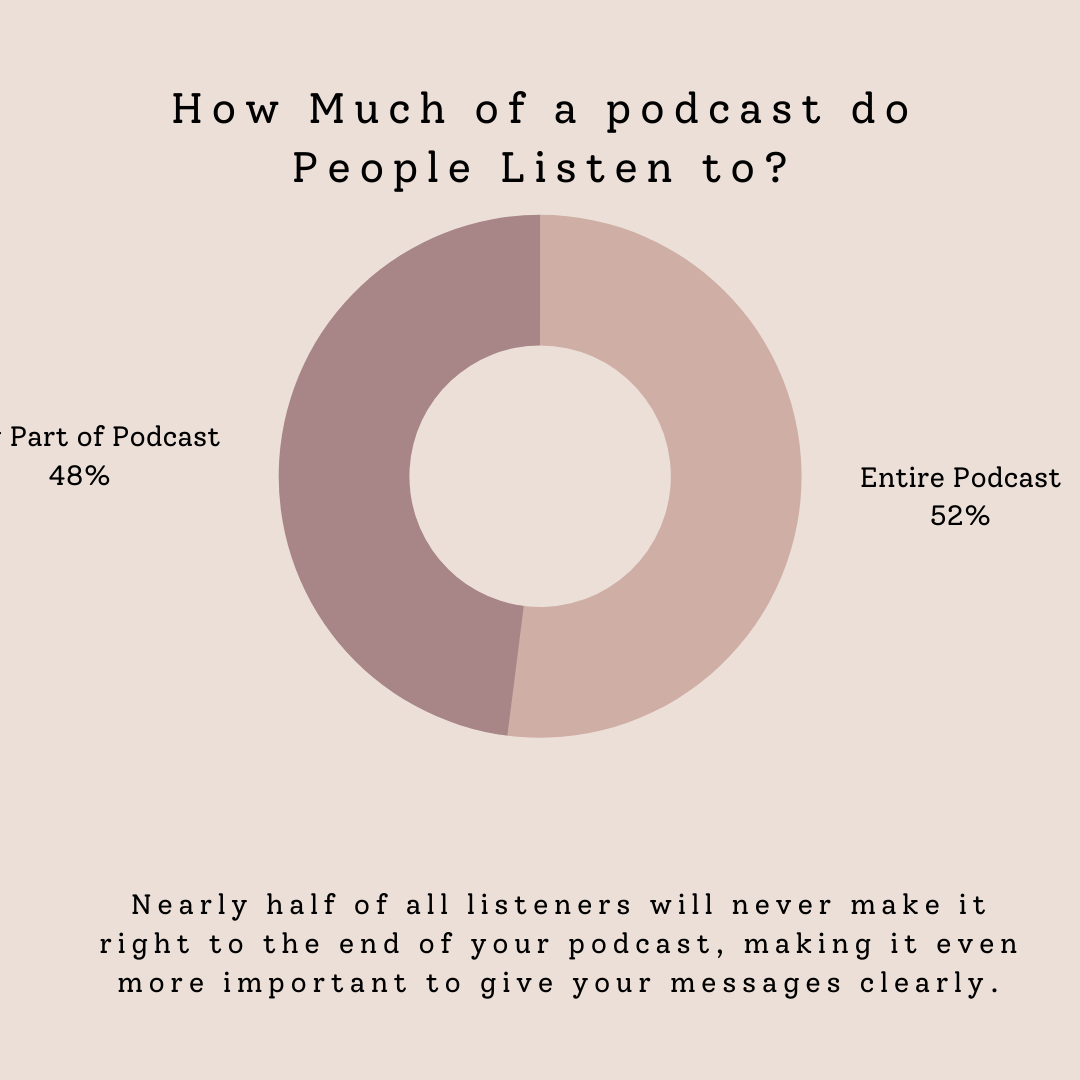
Make sure you hit the right tone
This part is crucial to your success. Your audience has only got what comes through their ears to build a picture of your brand. This means the tone of your audio should give them a good idea of what the podcast is about even before you get a chance to introduce any topics.
If your podcast is on a serious and informative subject, such as designing for AR and VR, make sure your audio sounds direct and professional. Equally, if your podcast is there to entertain, use a light-hearted tone of voice.
If you’re going to use music or sound effects over your intro, ensure they match with this. There’s nothing more confusing to a listener than a professional intro with a backing that sounds like it’s from a cartoon!
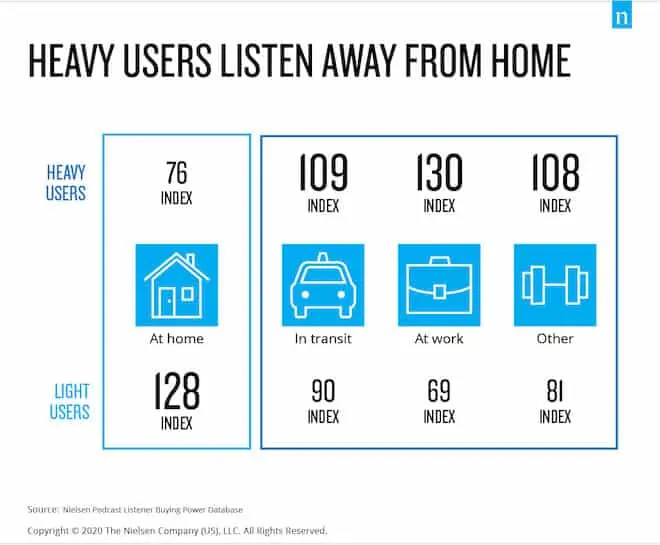
Include the essentials
Make sure you always include the key information your listener needs to connect with you too. It might feel like a bit of a roll call, so this is where you bring your unique personality and make sure you’re hitting the right tone, as we mentioned earlier.
On that note:
- Give your voice a name, whether that’s your nickname, first name, or what you go by on air. By making sure your audience knows who you are, you’re building a rapport. Graeme Hall does this well in his podcast Talking Dogs, introducing himself and talking briefly about where the audience might know him from i.e. his TV show.
- Tell your audience what you’re about, and make this something that resonates with them. For example, “Welcome to our podcast, where we discuss building and growing your start-up with those of you who are ready to take that next step. Today, we’re going to be discussing how to prioritize tasks.”
- Always mention your podcast title. Don’t assume your listener knows, as they may be working through a playlist or just going by what’s recommended.
- Give them an overview of what’s in store. Make it clear what the episode is there for and what ground you’re going to cover but without going into too much detail. This is especially useful if you’re new to podcasting, as your audience may not be familiar with the sort of content you cover.
Set out a problem – and then solve it
The best way to ensure your listeners get value from your content is to show how it solves a problem. To do this, set out a difficulty they might be experiencing, so they can relate to this, and then offer a solution.
If your audience is small business owners, one of their problems might be knowing which channel of communication to use with their team. The problem for this audience would be choosing the right option. You could address this in your intro and elaborate to show you empathize with the pain points they’re facing.
Then, provide value by expressing how your expertise and that of your guests will help solve this problem. For example, “We know that finding the best communication channels for your team can feel challenging, and there are so many options out there that it quickly gets confusing.”
Then give them the solution. “So, we’re going to talk you through your options and discuss the sorts of businesses each of these channels would work best for, so you can pick the perfect option.”
Give your audience confidence that your podcast is going to give them what they’re looking for.
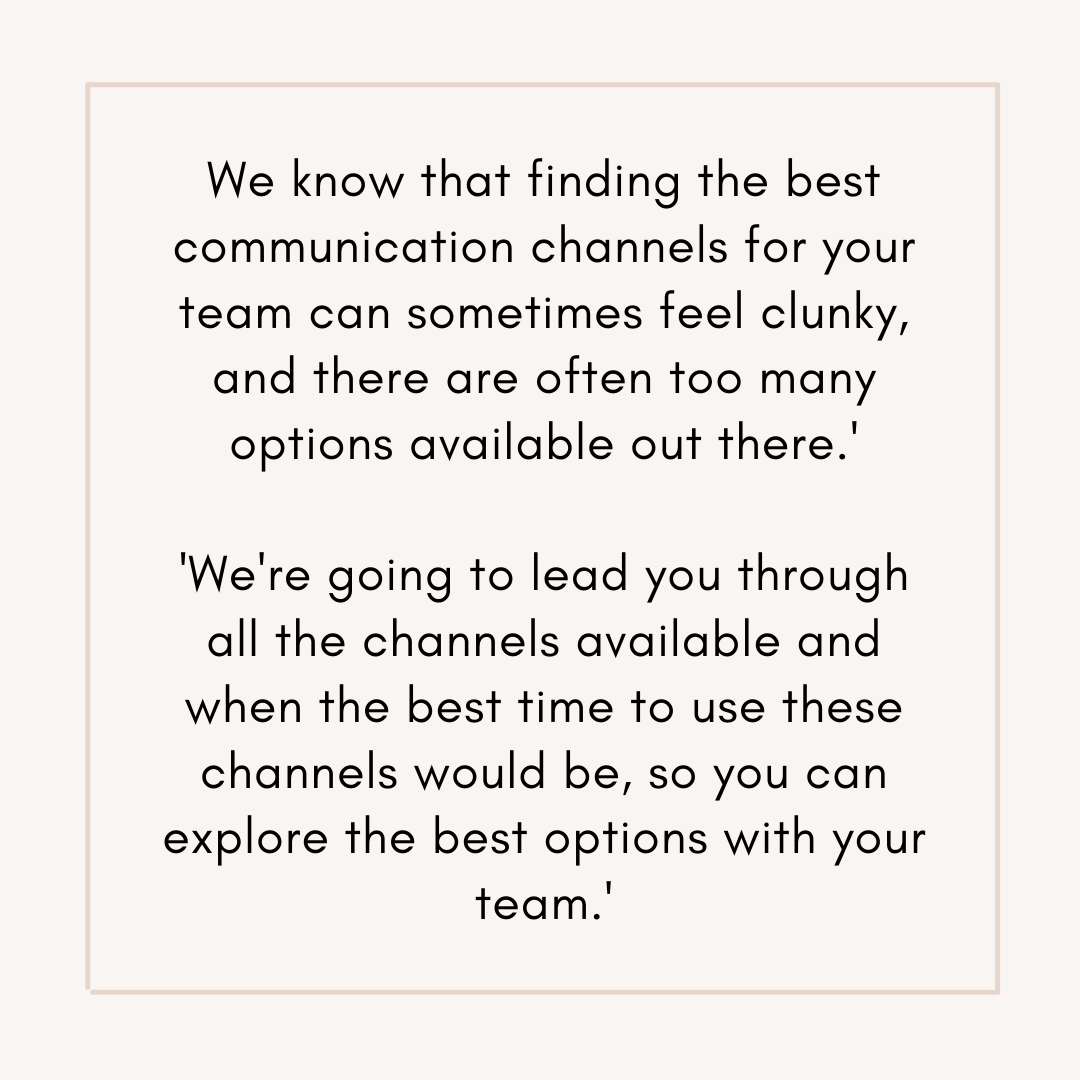
Podcast intro example.
Make your intro seamless
Your listener is going to want to know that your show is well-edited and will provide them with quality content. So, make sure your intro is professional and polished and follow these pointers:
- Make it no more than 30 seconds long. Any longer than this and your listener might press the shuffle button. Even your most avid subscribers are likely to skip past anything that goes on for more than half a minute.
- Script your intros. Avoid waffling by ensuring you’ve got the basics down.
- Make sure the intro music flows into the main episode. Avoid sharp contrasts or sudden changes in volume to avoid upsetting your listener’s ears.
- Spare them the details. This isn’t the place to give away every point you’re going to make in your podcast or flesh out topics.
Finish strong: create a podcast outro to turn listeners into subscribers
Now you’ve mastered creating a captivating intro, you may feel the hard work is over. You’ve won your listeners’ interest, stunned them with your content, and now you’re nearly at the finish line. There’s just the final piece of audio to master.
We’re talking about your outro. Here’s how you can nail it.
Create a connection with your audience
The podcast outro is a great place to talk to listeners directly, which is especially important as podcasting becomes more personalized. Thank them for tuning in and maybe ask them some questions relating to the episode’s content. This can be a great way to get your audience thinking about the podcast in a way that makes it memorable and gives them a chance to connect with you.
Podcasts may have started off as somewhere to share your thoughts on a topic, but they’re now far more social. They’re a great way to open up a conversation, whether you have a platform that allows comments or you direct listeners to your social media.
Your audience will appreciate the chance to share their thoughts, opinions, and experiences, and this will foster a deeper connection and add value to your podcast. Questions are a great way to open the conversation up and get your audience responding.
Show you’ve solved their problem
Remember that problem you set out in the intro? Now’s your chance to show you’ve provided a meaningful solution for your audience. This could take the form of a recap of the topics you’ve gone through and the main take-aways. Say your listener is a small business owner looking for tips on customer service techniques. You could structure your outro like this:
“Thanks for tuning in with us today. We’ve covered a lot of ground to help you refine your CS strategy. We hope this has given you ideas to open up the conversation around empathy, personalized services, and the HEARD technique with your team.”
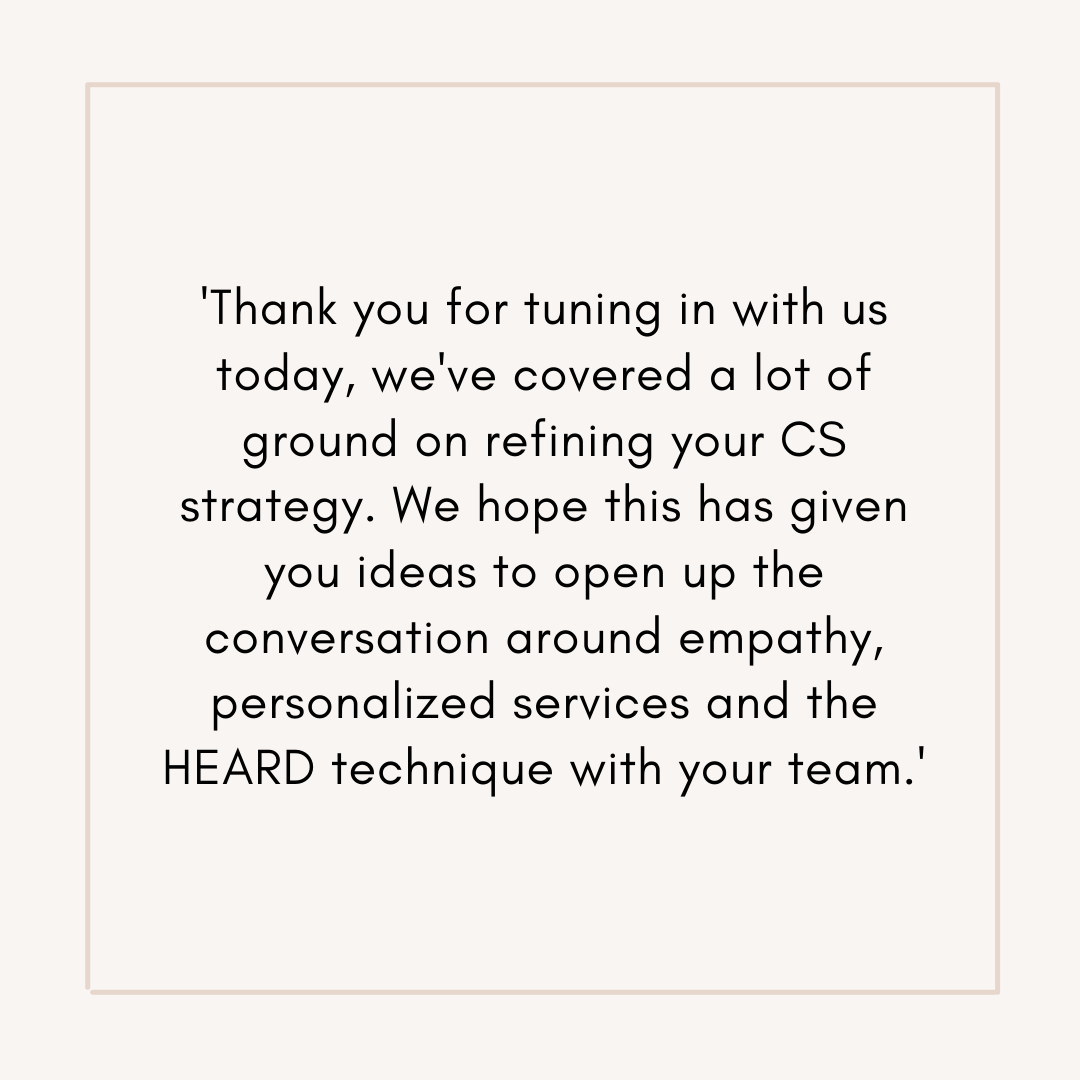
Include the perfect CTA
We know that having an audience for your podcast can feel like reward enough and that the bond you forge with your listeners is special. But listeners who’ve received value from your podcast are often happy to give back. This is something you should capitalize on, which is where a strong call to action (CTA) comes in.
Your CTA will be unique to you and your brand. You might simply be looking for your audience to hit subscribe, so they can be ready for your next episode. Or supporting you on Patreon might be what you’d like them to do next.
Some podcasters put their CTA in the intro as well. This is especially useful if the action is of benefit to both you and your audience, like the Hammersley Brothers here.
No matter what action you’d like your listener to take, make sure you ask them at the end of your podcast. If you’re providing a link, one is always best so you don’t overwhelm their ears.
Feel confident in your self-promotion; your listener cares enough about your content to have reached this point in the podcast. You can easily automate the process of making sure your podcast converts by including a pre-recorded CTA.
What are you waiting for? Make sure you’re featuring killer podcast intros and outros in your future by following these top tips!


